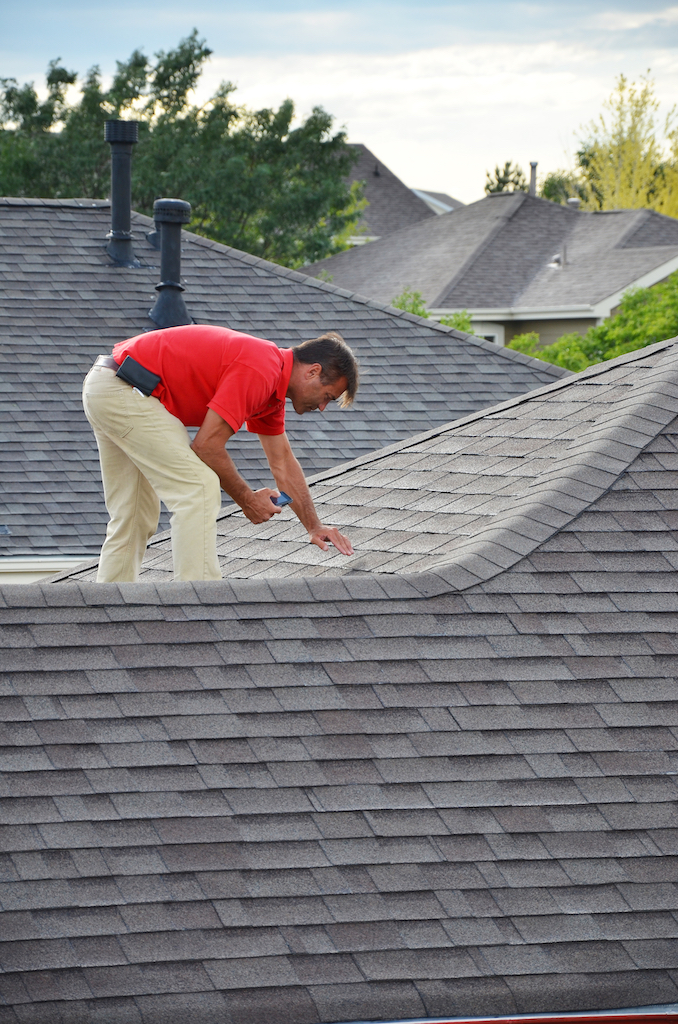If you’re in the market for a new roof, too few options will not be a problem. There are lots. New technologies and innovations now make it possible to have just about any look you desire no matter where you live. Plus, a new roof will add value to your home and upgrade the overall exterior appeal.
With so many different types of roofing materials to choose from, a bit of research will help you decide whether to install a new type of roof or simply replace with the same material you now have. When choosing roofing materials, consider the following questions:
- How heavy is this material?
- Does it require special framing?
- Does it come in a variety of colors/styles that complement your home?
- Does it meet the fire codes in your area?
- Any installation and maintenance issues?
- Does it perform well in your weather?
- What is the cost, lifespan and warranty?
The answers to these questions, along with the following information, will help you determine the best choice for your home.
Asphalt shingles
Pros: Asphalt comes in a variety of colors, is widely available and is one of the least expensive materials; the cheapest 3-tab shingles are an affordable way to dress up a home before putting on the market; DIY asphalt shingle installation is possible for those with good skills, experience, and equipment.
Cons: Asphalt has a shorter life span than other roofing materials (cheaper or low-end asphalt shingles like 3-tab or strip shingles may only last 10-15 years in hot, sunny climates); it doesn’t provide the insulation other materials offer; and the quality varies.
House styles: Asphalt shingles work with many architectural styles, especially traditional suburban styles.
Cost and lifespan: Prices range from $70 to $120 a square and, if maintained properly, shingles will last 20 to 25 years.
Clay and concrete tiles
Pros: Clay and concrete tiles are long-lasting and non-combustible; they are great options for hot climates where salt air and high winds are present; tiles are recyclable; light-colored tile reflects sunlight, so it reduces heat penetration and cooling requirements.
Cons: Clay and concrete tiles are expensive, heavy, and usually require additional framing; tiles may break if walked on, so repairing chimneys and other roofing issues is trickier when the roof is covered with tiles.
House styles: Clay and concrete tiles work well with Mediterranean, Mission, Southwestern and Spanish-style homes.
Cost and lifespan: Concrete $200-$800/Clay $500-$1,000 per square installed. Life expectancy is 50 to 100 years.
Metal roofing
Pros: Metal roofing is durable, lasts longer than asphalt or wood, and offers high solar reflectance; recycled materials are used in most metal roofs, and old metal panels are 100 percent recyclable at the end of their service life.
Cons: Metal roofing is relatively expensive, and installation may be an issue with some companies; metal can dent when hit with a heavy object, and replacing metal panels is costlier than replacing asphalt, wood, or tiles, although many metal roof styles are rated to withstand large hail.
House styles: Metal looks great on bungalows, cabins, contemporary and cottage-style homes.
Cost and lifespan: Prices usually start around $100 to $300 a square, but some styles can cost $600 to $800 a square. Metal roofing can last 40 to 75 years.
Slate
Pros: Slate is durable, fire-resistant, and sustainable roof material that can be recycled. Synthetic slate is lightweight yet strong.
Cons: Slate is expensive, heavy, and requires extra framing and professional installation; the quality can vary with imported slate; if a slate roof isn’t properly installed, moisture issues will start quickly.
House styles: Slate works well with Colonial, European and French chateau homes.
Cost and lifespan: Prices start at about $600 a square and up. Slate can last more than 50 years and sometimes 100 years or more.
Wood shingles and shake
Pros: Wood shingles offer a rustic look and are a natural product usually made from cedar, redwood, and Southern pine; many shakes and shingles are made from salvaged trees that have fallen over from age or were toppled by storm; wood is recyclable into wood chips, mulch, or compost.
Cons: Fire codes in some areas prohibit use; wood shingles can be a concern in wet climates and can mold, split, or rot; untreated wood shakes and shingles are high maintenance—they need to be cleaned consistently to prevent the growth of algae or moss, and debris needs to be cleared to allow the wood to breathe.
House styles: Shake’s rustic aesthetic pairs well with bungalow, Cape Cod, cottage, Craftsman and Tudor-style homes.
Cost and lifespan: Shingles—about $4.50 to $9 per square foot, installed; shakes—around $6.50 to $11 per square foot, installed. In dry climates, a wood shingle or shake roof can last 60 years; in damp conditions, maybe 20 years.
Synthetic roofing products
Pros: Synthetic roofing is often not as fragile, heavy, or expensive as natural products.
Cons: Some of these products can absorb water, and the quality varies; newer products aren’t as time-tested as traditional materials.
House styles: Synthetic roofing products work with different architectural styles.
Cost and lifespan: Prices start at about $300 a square and are warrantied for up to 50 years.
Going green
Pros: A living roof offers improved air quality, less pollution, better insulation (reducing heating and cooling costs), water conservation, and wildlife habitat.
Cons: Green roofs are expensive to install. Reinforcing the roof of an existing home can necessitate expensive structural changes. Improper installation, inadequate drainage, or roots penetrating the protective membrane can cause leaks.
House styles: Green roofs work with many different architectural styles.
Cost and lifespan: Depending on intensive, extensive, or semi-intensive, costs range from $10-$50 per square foot and average lifespan when properly maintained is 40+ years.



